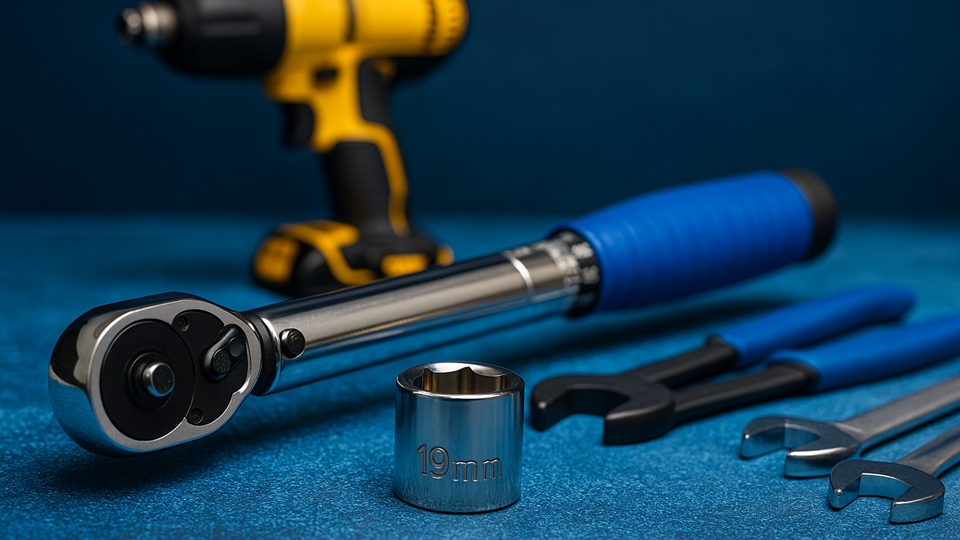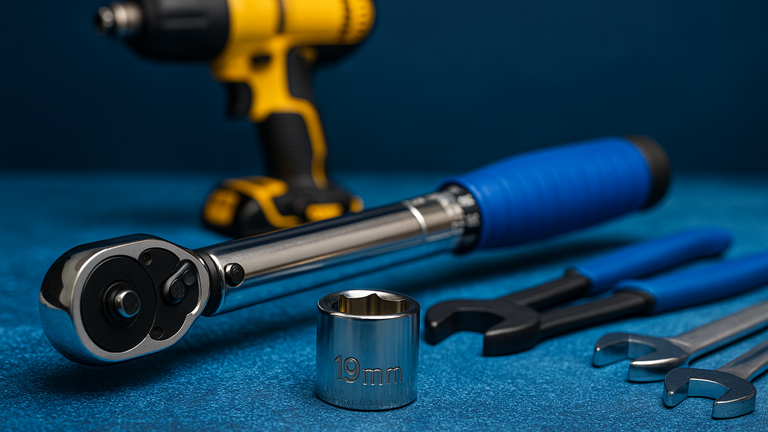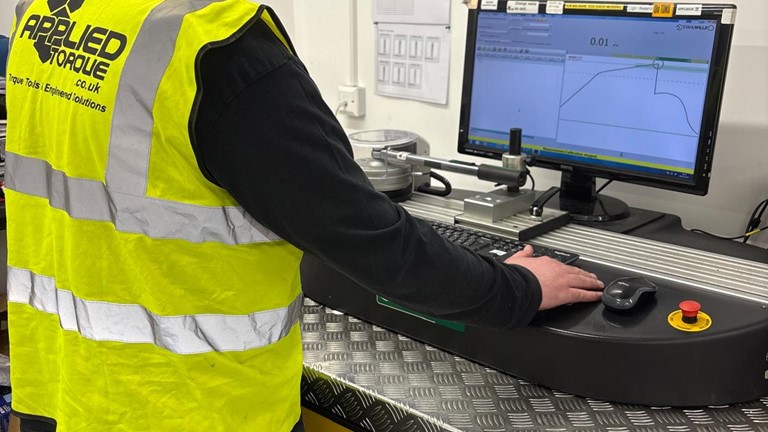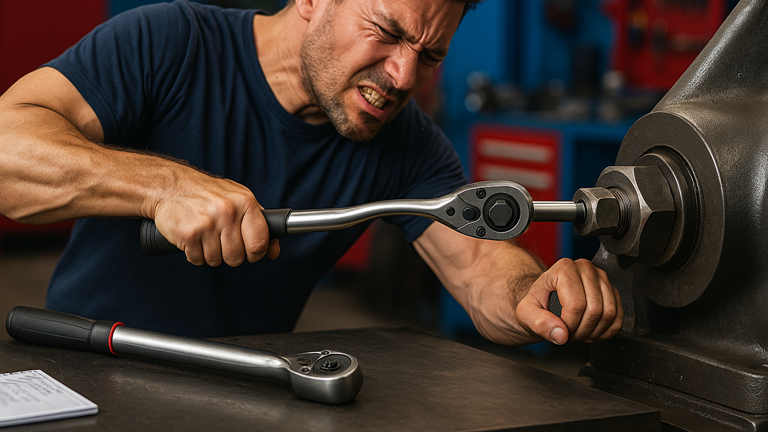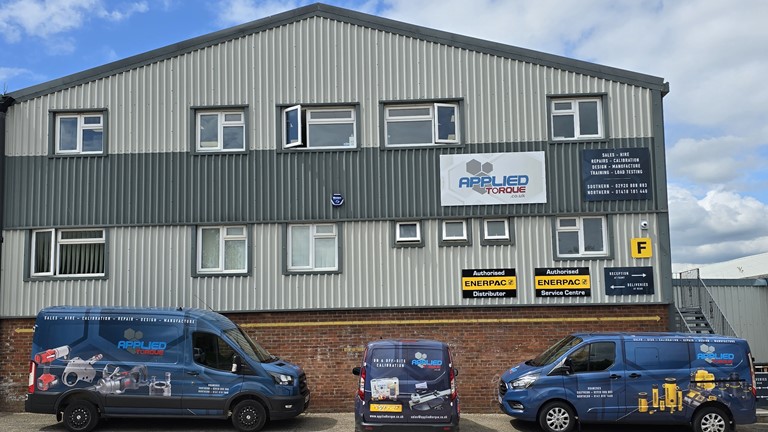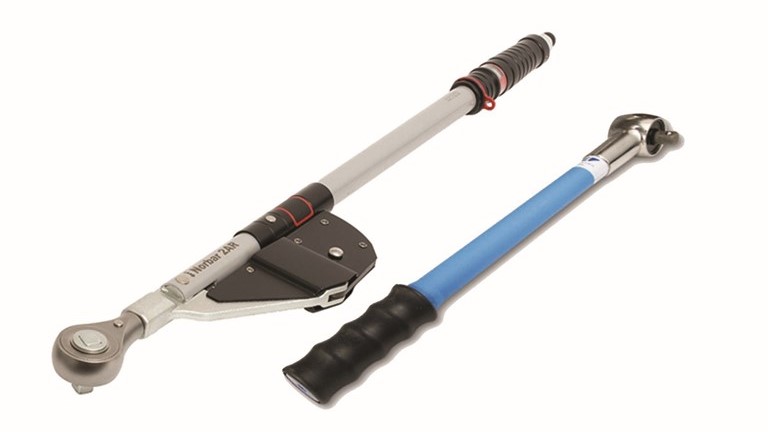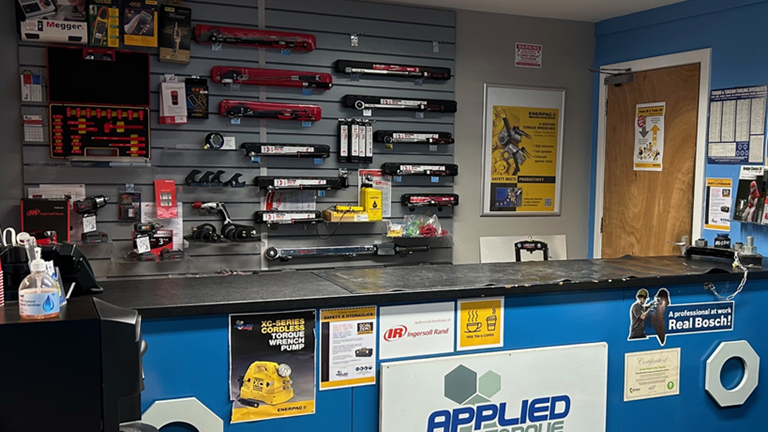What is Torque Wrench Calibration and Why is it Important?
Torque wrenches are essential tools for ensuring precision in engineering, automotive, and industrial applications.
To maintain accuracy, these tools must undergo regular calibration. Torque wrench calibration is the process of adjusting and verifying that the tool applies the correct torque as per specifications.
Without proper calibration, even the best torque wrenches can deliver incorrect measurements, potentially leading to damaged equipment, compromised safety, or failed projects.
The risks of using an uncalibrated torque wrench are significant. It can result in fasteners being over-tightened or under-tightened, which may lead to machinery malfunction, increased maintenance costs and even safety hazards.
To avoid these issues, it's crucial to follow a calibration plan and to keep an eye out for signs that your torque wrench needs calibration. Here are five key indicators.

Close-up of Applied Torque technician calibrating a torque wrench using a calibration machine
5 Signs That Your Torque Wrench Needs Calibration
1. Inconsistent Torque Readings
One of the most obvious signs that your torque wrench needs calibration is inconsistent torque readings. If your tool provides varying results for the same setting, it may no longer be accurate.
To identify these inconsistencies, you can compare torque readings across several uses or check against a calibrated control wrench. Inconsistent torque can lead to improper fastening, which can jeopardise the quality of your work and safety.
Projects that demand high precision, such as those in transportation and utility infrastructure, cannot afford these inaccuracies.


Side-by-side comparison of two torque wrenches being tested, with one showing inconsistent torque readings on a digital gauge and the other showing stable readings, demonstrating the difference in accuracy.
2. Visible Wear and Tear
Another indication that your torque wrench may need calibration is visible wear and tear. Over time, parts like the handle, head, and scale can suffer from regular use, affecting the wrench’s performance. Specifically, check for cracks, bent components, or a loose head. These signs suggest the tool may be compromised and, thus, delivering incorrect torque values. Addressing these issues promptly will not only maintain the accuracy of your tool but also extend its lifespan.
For those unsure about identifying physical damage, Applied Torque offer expert torque wrench calibration services, where professional technicians can inspect and recalibrate your tool to ensure optimal performance.


Close-up of torque wrench with visible damage
3. Frequent Use and High Workload
Heavy use is another factor that can throw off your wrench’s calibration. If your torque wrench is frequently used in high-stress environments—such as assembly lines or heavy industrial applications..
Most manufacturers recommend recalibration after a specific number of cycles or hours of use. This guideline is essential to follow, as repeated exposure to high workloads can cause subtle shifts in accuracy over time.
If you use your wrench regularly for high-demand tasks, you should be, at the bare minimum, adhering to manufacturer recommendations on calibration schedules.
Regular recalibration will prevent performance deterioration and ensure consistent, reliable results. To explore torque wrenches built for high-load applications, you can visit Applied Torque's torque wrenches for sale and hire.
4. Past Calibration Date
Every torque wrench comes with a manufacturer-recommended calibration schedule, which should be strictly followed to maintain accuracy. Ignoring these dates puts your projects at risk, especially in sectors where precision is non-negotiable. You can typically find the last calibration date on a sticker or in the tool’s logbook.
Using a torque wrench beyond its calibration date can result in faulty performance, affecting the quality of your work and potentially causing damage. For those who may have forgotten their tool's last calibration, it’s always wise to check your records or bring them in for us to take a look. Staying on top of these dates ensures your tool remains in peak condition, helping you avoid unnecessary errors.
For more detailed guidelines on managing calibrated equipment, the ISO offers a comprehensive procedure to follow.

Torque wrench in action in an industrial setting
5. Noticeable Performance Issues
Lastly, if you’re experiencing performance issues, it’s a strong indicator that your torque wrench is overdue for calibration. Performance problems could include the tool slipping, failing to hold a setting, or feeling loose during operation.
User feedback, such as odd noises or a lack of tension, also points to underlying issues with accuracy. Any noticeable difference in how the wrench functions compared to when it was first calibrated could signal that recalibration is required.
Ignoring these problems can have serious safety and accuracy consequences. If your torque wrench is showing signs of performance degradation, it’s essential to get it calibrated as soon as possible.

Technician examining a malfunctioning torque wrench
Does Your Torque Wrench Need Calibration?
[Wide shot of Applied Torque's calibration team working in a facility, showcasing several torque wrenches in for service, with technicians inspecting and calibrating tools, promoting the company’s expertise.]
Regular calibration is essential for ensuring that your torque wrench remains precise and reliable. By keeping an eye out for these five signs—inconsistent readings, visible wear, heavy usage, an overdue calibration date, and performance issues—you can ensure your tool is functioning at its best. Ignoring these indicators not only risks your work quality but also the safety of your equipment and team.
We provide on-site and off-site calibration services that meet the highest industry standards, ensuring your torque wrenches deliver precise results every time.
If your torque wrench is showing any of these signs, it's time for professional calibration. Contact Applied Torque today to ensure your tools remain as accurate as the day you bought them.


